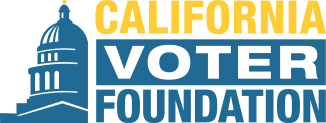Excerpts:
In 2018, community organizer Chris Lodgson helped promote the voting changes coming to Sacramento’s historically Black Oak Park neighborhood.
Polling places at churches and schools were on the way out. But the new options were going to be good: automatically mailed ballots, more days to vote, drop boxes. Ahead of this year’s midterms, 28 California counties have made the same changes.
The expanded ballot access has worked largely as hoped. Turnout increased overall in the 2020 presidential election thanks to universal vote-by mail. Yet research shows the consolidation of in-person polling locations in many California counties led to losses in Black and Latino turnout as a share of the electorate.
- - - - - - - - - -
The Old North Sacramento United Methodist Church was where Derrell Roberts, a longtime community leader in North Sacramento, voted every election until Sacramento County closed it in 2018.
“Fewer polling places means fewer chances for folks to vote,” said Roberts. As far as impact of closures on turnout, he said the pandemic year muddied any effects. “This election and the next presidential election will be a good judge of that.”
Kim Alexander, president of the California Voter Foundation, was part of an unsuccessful push for $85 million in this year’s budget for counties and the Secretary of State’s office to increase public communication on voting changes and options.
“The state completely underfunds elections,” she said, leaving counties to foot the bill even when state races dominate the ballot. “If the state and federal government paid their fair share, there would be resources to open up however many voting sites are needed to serve voters.”
On the subject of resources, several election administrators said opening voting centers for ten days is likely inefficient. Most voters wait until the last minute, so many centers sat empty the first few days in 2020.
An additional 11 counties opted into the the Voter’s Choice Act for this election, which includes the permanent consolidation of polling places into vote centers. Advocates like Lodgson want to see more voting centers and drop boxes in low-income communities of color.
But Efrén Pérez, a political scientist at UCLA’s Latino Policy and Politics Institute, said its too soon to make changes to the Voter’s Choice Act reforms. Analyzing turnout data to pinpoint impacts is important, but isn’t the full story yet.
“I think you’re right to say hey, this seems to be a little bit off from what was promised,” he said. “But there’s a big data limitation. We’ve only seen one election — let’s give it a whirl two more times and then look at the effects.” (Full Story)

